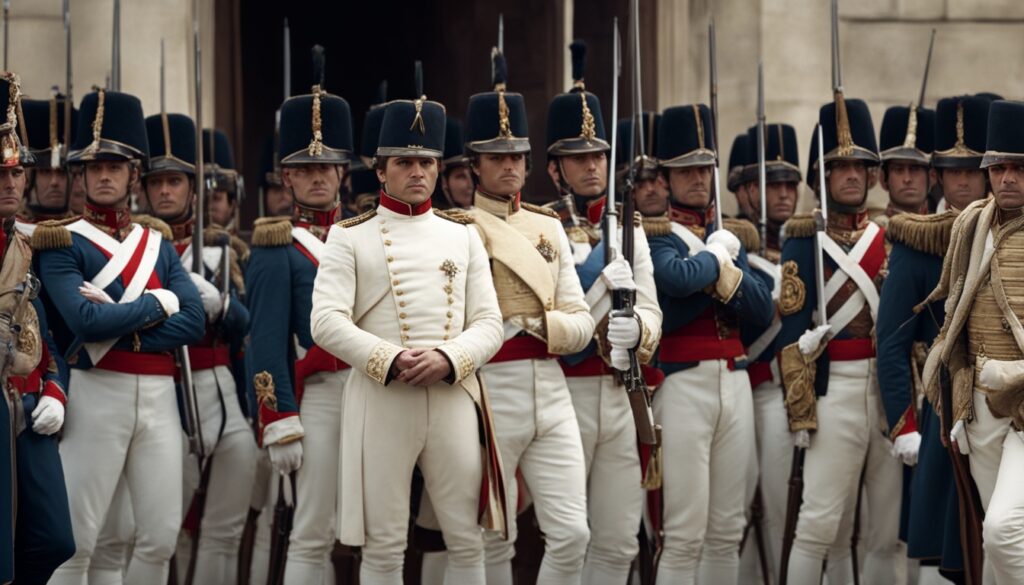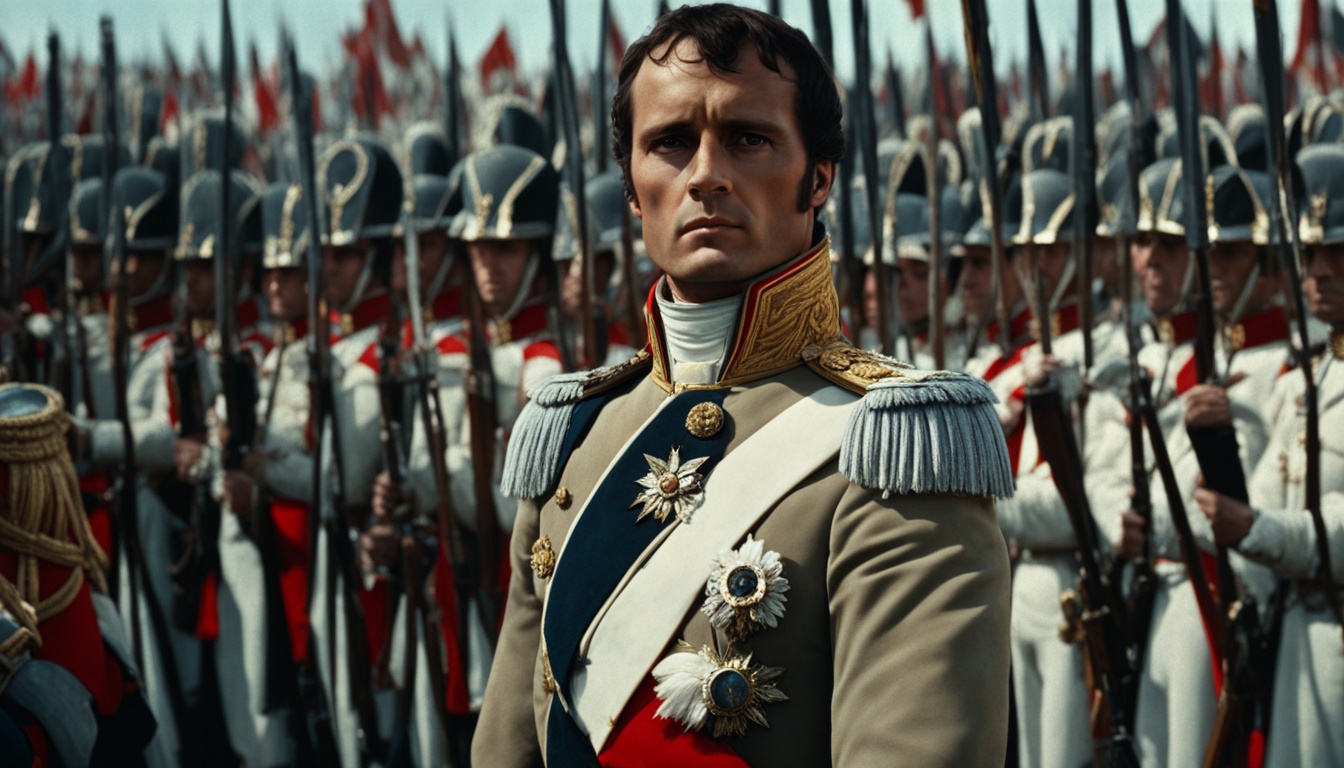Napoleon Bonaparte’s height has been debated for centuries. Many think he was short, but he was actually average for his time. Historical figures’ height often changes over time. Napoleon was about 5 feet 6 inches tall, which was normal for French men in the early 1800s.
Why did people think Napoleon was short? It was due to old measurement systems and his tall Imperial Guards. They made him look shorter by comparison.
Key Takeaways
- Napoleon Bonaparte was of average height for his time
- His actual height was about 5 feet 6 inches in modern measurements
- The short stature myth stemmed from measurement system differences
- Napoleon’s Imperial Guards were notably tall, skewing perceptions
- Historical figures’ heights are often misrepresented over time
The Origin of Napoleon’s Height Myth
The myth about Napoleon’s height started in the early 1800s with British propaganda. James Gillray, a well-known cartoonist, was a big part of it. He began drawing Napoleon as a small man in large clothes in 1803.
Gillray’s cartoons came after Napoleon clashed with Lord Whitworth, the British ambassador. One of his most famous works was “Maniac-raving’s-or-Little Boney in a strong fit.” It depicted Napoleon as short and quick to anger. This image really stuck with people.
Other artists also joined in, creating more cartoons that showed Napoleon as short. Isaac Cruikshank was one of them. Their work helped spread the idea that Napoleon was tiny. This British propaganda was very effective. It made people see Napoleon as a small man with a big temper. This image has lasted and many still believe it today.
Napoleon’s Average Height: Debunking the Misconception
Napoleon Bonaparte’s height has been debated for centuries. Many think he was very short, but this isn’t true. He was about 5 feet 6 inches (1.68 meters) tall, which was average for his time.

The confusion about Napoleon’s height comes from a mix-up with the French measurement system. In France, the pied du roi (king’s foot) was longer than the English foot. This led to mistakes when translating his height.
Napoleon was called “Le Petit Caporal” (The Little Corporal) by his soldiers. This nickname was a sign of affection, not a comment on his size. Paintings by Jacques-Louis David show Napoleon as well-proportioned with others around him.
Looking at historical records and artifacts helps us understand Napoleon’s true height. This clears up the myth about his height. It shows us how important it is to think about cultural context and measurement systems when looking at history.
Cultural Impact of the Napoleon Height Myth
The myth about Napoleon’s short stature has deeply influenced popular culture. It led to the term “Napoleon Complex,” a belief that short men act more aggressively to compensate for their height. This historical misconception has lasted for centuries, often hiding Napoleon’s true achievements and traits.
Cultural stereotypes like this one are hard to shake off. The Napoleon height myth shows how strong propaganda can shape what we think. Even when facts correct us, these ideas keep affecting how we view historical figures.
The Napoleon Complex is a common theme in movies, books, and daily talk. It’s used to explain or tease short men in power. This shows how myths can become part of our culture, even after they’re proven wrong.
Looking at the Napoleon height myth teaches us how false info can spread and become accepted. It reminds us to doubt our beliefs about historical figures. We should look for accurate info instead of just believing myths or stereotypes.

Leave a Reply